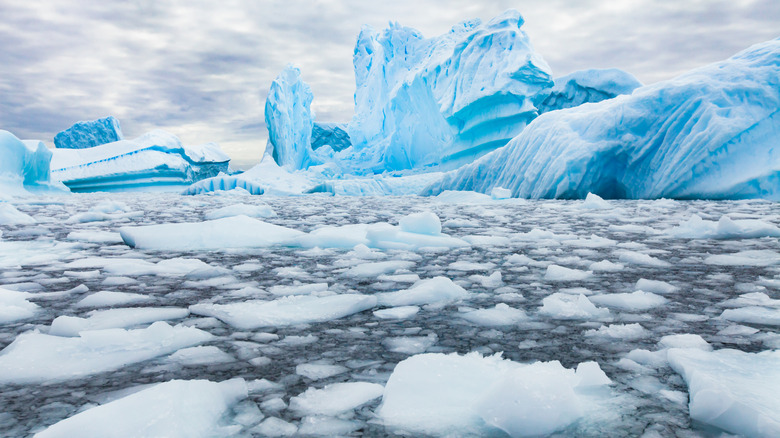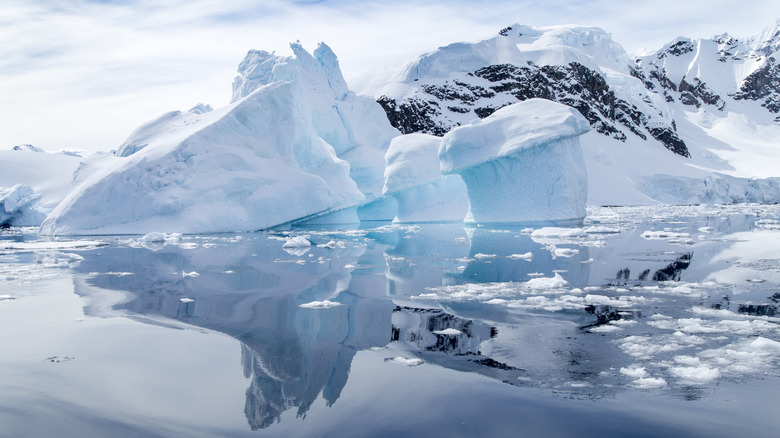Scientists Have Discovered The Oldest Recorded Air Frozen In Antarctica
It's an interesting thought experiment to brainstorm what could be trapped under the thick, centuries old ice in Antarctica. Aliens? A virus? Some strange, undiscovered creatures? Scientists have found life thriving beneath Antarctica before, but their latest find is nothing so elaborate. A team of scientists from the Woods Hole Oceanographic Institute has taken samples from the Antarctic ice in a place called Allan Hills. The samples include ice and air — really old air, actually — preserved in tiny air bubbles that were trapped inside. It's the oldest air ever measured and gives researchers a glimpse at what the planet looked like in the past.
It may seem a simple thing, finding old ice and old air, but planet Earth is so geologically active that finding samples like this can be difficult, let alone finding samples that provide valuable past climate details. Furthermore, this is only possible because of Antarctica's unique makeup. The buildup of ice and snow traps materials and freezes them, creating a sort of time capsule that eventually gets locked and buried beneath the surface. To open these frozen time capsules, scientists take what are called vertical cores, long slices of ice extracted from beneath the surface. They can use the samples and the information gathered to reconstruct the planet's environmental conditions at the time the original materials were trapped. Of course, the information is limited to the Antarctic region.
What do we know about the air samples and the Earth's past?
Looking to the past may help scientists predict the climate of Earth's future. That's why these recent samples are so valuable. The area where they were taken from is unique because the oldest ice is closer to the surface than it is in other areas of Antarctica. Scientists don't really know why the old ice is on top. "We're still working out the exact conditions," said lead scientist Sarah Shackleton in a press release. But she elaborates that it's likely due to a combination of strong winds and the region's bitter cold, with the wind blowing away the snow, and the temperatures slowing the ice to a near standstill.
As detailed in a research paper published in Earth, Atmospheric, and Planetary Sciences, three cores were drilled at depths of 150, 159, and 206 meters. The air bubbles aren't large, they're microscopic, but they're densely packed and provide a lot of valuable information. Originally, scientists hoped to find samples from the Pliocene climate, about 2.6 million years ago. The actual discovery "far exceeded" expectations with air from 6 million years ago. The age of the trapped air was determined through argon isotope analysis, and by looking at the water isotopes present, it was determined that Antarctica was warmer by about 12 degrees Celsius back then. If it was warmer, it lends credence to the possibility that Antarctica was once covered by a lush jungle. Next, scientists hope to analyze the greenhouse gases present at the time to understand how they've changed.

